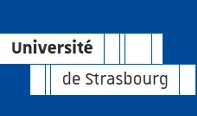Daniele Fazzi "Structure-property relationships in a high electron mobility co-polymer: from spectroscopy to charge transport mechanisms in P(NDI2OD-T2)"
Max-Planck-Institut für Kohlenforschung, Kaiser-Wilhelm-Platz 1, D-45470 Mülheim an der Ruhr, Germany
| What |
|
|---|---|
| When |
Jul 17, 2013 from 02:15 PM to 03:00 PM |
| Where | Hörsaal Makromolekulare Chemie, Stefan-Meier-Str. 31, Freiburg |
| Add event to calendar |
|
Semiconducting polymers are assuming an increasing importance in electronic and optical applications. While p-type organic semiconductors have been widely studied in the past years, only recently n-type organic materials are being characterized in terms of basic structure−property relationships. The n-type copolymer poly{[N,N′-bis(2-octyldodecyl)-naphthalene-1,4,5,8-bis(dicarboximide)-2,6-diyl]-alt-5,5′-(2,2′-bithiophene)} (P(NDI2OD-T2), shows outstanding properties in terms of electron mobility (up to 0.85 cm2/(Vs) in OFET) and despite the large number of studies appeared in literature [1], some open issues concerning the relationships between the structure and the charge transport properties still remain opened. In this seminar we report recent results related to a joint computational and experimental study with the aim to provide an overall view about the structural and charge transport properties of P(NDI2OD-T2).
On the one side, quantum chemistry methods (DFT and TDDFT) have been widely applied to investigate the i) charge transport mechanisms, ii) vibrational and iii) excited state properties of P(NDI2OD-T2), underlying the need to adopt range-separated corrected DFT functionals for a proper description of the electronic structure and the electron-phonon coupling constants in donor-acceptor based co-polymers [2]. On the experimental side, IR and grazing angle FT-IR (RAIRS) spectroscopy have been used to investigate the intra-molecular structure and orientation of P(NDI2OD-T2) polymer backbone with respect to the substrate. Combining experimental and computational data we derived a structural model for describing the relative orientation of both NDI2OD and T2 units with respect to the substrate plane before (face-on) and after (edge-on) thermal annealing [3]. Finally, charge modulation spectroscopy (CMS) have been carried out for identifying the spectroscopic features of polarons in operating OFET. CMS spectra [4] and TDDFT calculations for both neutral and charged P(NDI2OD-T2) unveil the localized intra-chain nature of polarons paving the way for developing suitable charge transport models for this n-type organic semiconductor.
[1] Rivnay, J.; et al., Chem. Rev. 2012, 112, 5488−5519.
[2] Fazzi, D.; et al., J. Am. Chem. Soc. 2011, 133, 47.
[3] Giussani, E.; et al., Macromolecules 2013, dx.doi.org/10.1021/ma302664s.
[4] Caironi, M.; et al., Adv. Funct. Mater. 2011, 21, 3371.

